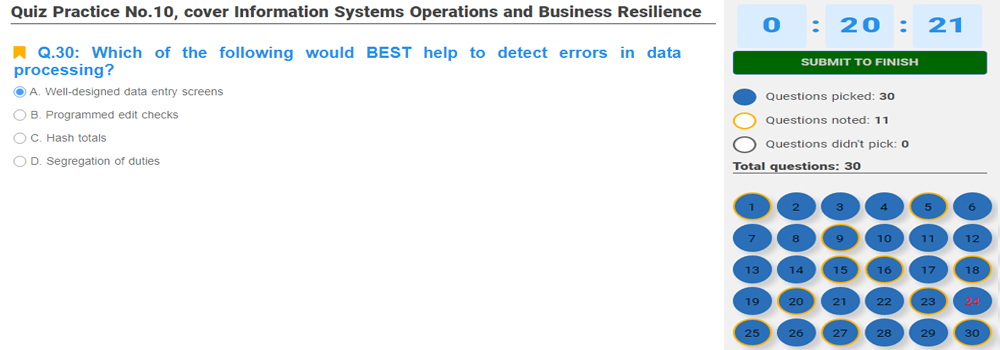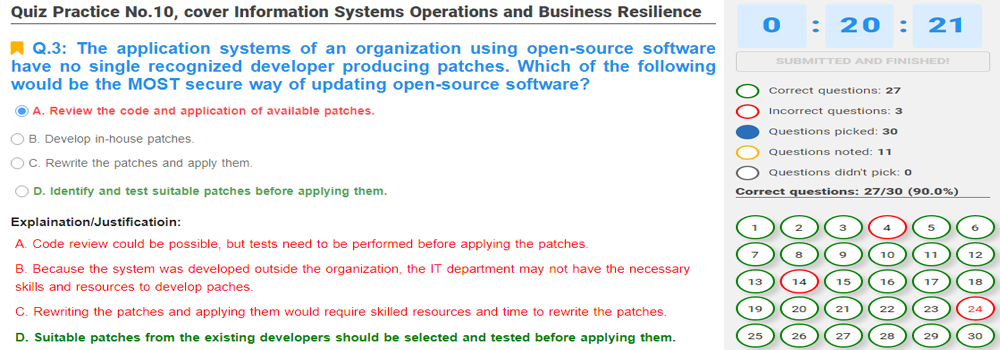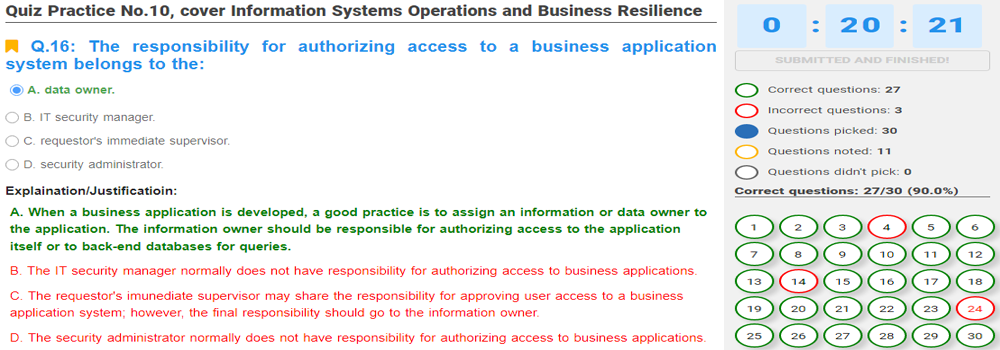[Study Guide Review, Updated JUNE, 2024] Certified Information Systems Security Professional Cert code: CISSP, Questions of the exam: 150, Minutes of the exam: 180, Correct to pass: 70%.
[Study Guide Review, Updated MAY, 2024] Certified Information Systems Security Professional Cert code: CISSP, Questions of the exam: 150, Minutes of the exam: 180, Correct to pass: 70%.
[Study Guide Review, Updated MARCH, 2024] Certified Information Systems Security Professional Cert code: CISSP, Questions of the exam: 150, Minutes of the exam: 180, Correct to pass: 70%.
[Study Guide Review, Updated JANUARY, 2024] Certified Information Systems Security Professional Cert code: CISSP, Questions of the exam: 150, Minutes of the exam: 180, Correct to pass: 70%.
[Study Guide Review, Updated NOVEMBER, 2023] Certified Information Systems Security Professional Cert code: CISSP, Questions of the exam: 150, Minutes of the exam: 180, Correct to pass: 70%.
SOME NOTES ABOUT CERTIFIED INFORMATION SYSTEMS SECURITY PROFESSIONAL:
Certified Information Systems Security Professional [CISSP] is an important and mandatory certification on your path to becoming an expert in your field.
To get this certificate, you need to firmly and confidently grasp the content listed below. Then, you need to pass the exam directly on (ISC)²'s system. This exam has a duration of 180 minutes, with 150 questions. You need to answer correctly at least 70% of the total questions on the exam.
Below are the contents that you need to grasp firmly and confidently before registering to take the exam on (ISC)²'s system:
1. Security and Risk Management.
1.1. Understand and apply concepts of confidentiality, integrity and availability.
1.2. Apply security governance principles.
1.3. Compliance.
1.4. Understand legal and regulatory issues that pertain to information security in a global context.
1.5. Understand professional ethics.
1.6. Develop and implement documented security policies, standards, procedures and guidelines.
1.7. Understand business continuity requirements.
1.8. Contribute to personnel security policies.
1.9. Understand and apply risk management concepts.
1.10. Understand and apply threat modeling.
1.11. Integrate security risk considerations into acquisition strategy and practice.
1.12. Establish and manage information security education, training, and awareness.
2. Asset Security.
2.1. Classify information and supporting assets.
2.2. Determine and maintain ownership.
2.3. Protect privacy.
2.4. Ensure appropriate data, hardware and personnel retention.
2.5. Determine data security controls.
2.6. Establish handling requirements.
3. Security Engineering.
3.1. Implement and manage engineering processes using secure design principles.
3.2. Understand the fundamental concepts of security models.
3.3. Select controls and countermeasures based upon systems security evaluation models.
3.4. Understand the security capabilities of information systems.
3.5. Assess and mitigate the vulnerabilities of security architectures, designs and solution elements.
3.6. Assess and mitigate vulnerabilities in web-based systems.
3.7. Assess and mitigate vulnerabilities in mobile systems.
3.8. Assess and mitigate vulnerabilities in embedded devices and cyber-physical systems.
3.9. Apply cryptography.
3.10. Apply secure principles to site and facility design.
3.11. Design and implement physical security.
4. Communications and Network Security.
4.1. Apply secure design principles to network architecture.
4.2. Secure network components.
4.3. Design and establish secure communication channels.
4.4. Prevent or mitigate network attacks.
5. Identity and Access Management.
5.1. Control physical and logical access to assets.
5.2. Manage identification and authentication of people and devices.
5.3. Integrate identity as a service.
5.4. Integrate third-party identity services.
5.5. Implement and manage authorization mechanisms.
5.6. Prevent or mitigate access control attacks.
5.7. Manage the identity and access provisioning lifecycle.
6. Security Assessment and Testing.
6.1. Design and validate assessment and test strategies.
6.2. Conduct security control testing.
6.3. Collect security process data.
6.4. Analyze and report test outputs.
6.5. Conduct or facilitate internal and third-party audits.
7. Security Operations.
7.1. Understand and support investigations.
7.2. Understand requirements for investigation types.
7.3. Conduct logging and monitoring activities.
7.4. Secure the provisioning of resources.
7.5. Understand and apply foundational security operations concepts.
7.6. Employ resource protection techniques.
7.7. Conduct incident management.
7.8. Operate and maintain preventative measures.
7.9. Implement and support patch and vulnerability management.
7.10. Participate in and understand change management processes.
7.11. Implement recovery strategies.
7.12. Implement disaster recovery processes.
7.13. Test disaster recovery plans.
7.14. Participate in business continuity planning and exercises.
7.15. Implement and manage physical security.
7.16. Participate in addressing personnel safety concerns.
8. Software Development Security.
8.1. Understand and apply security in the software development lifecycle.
8.2. Enforce security controls in development environments.
8.3. Assess the effectiveness of software security.
8.4. Assess security impact of acquired software.
GOODLUCK TO YOU!!!




